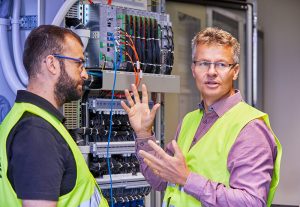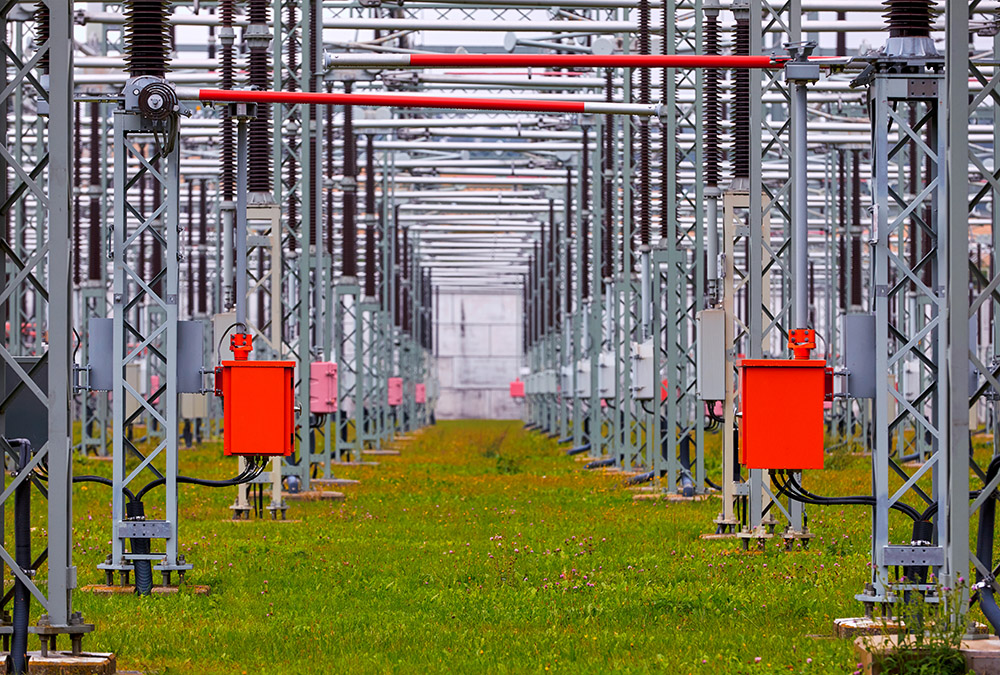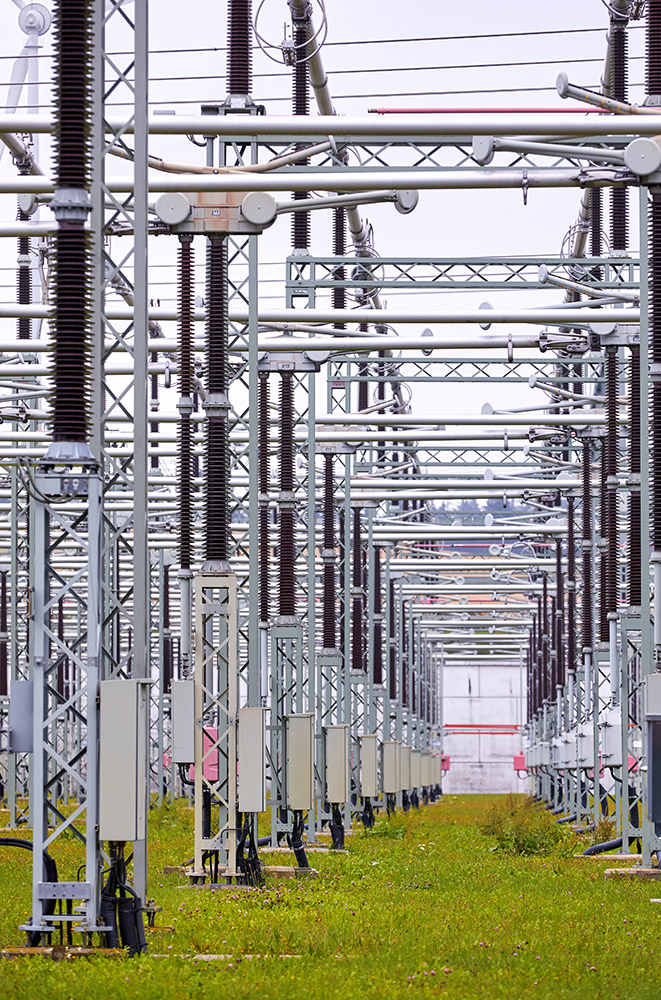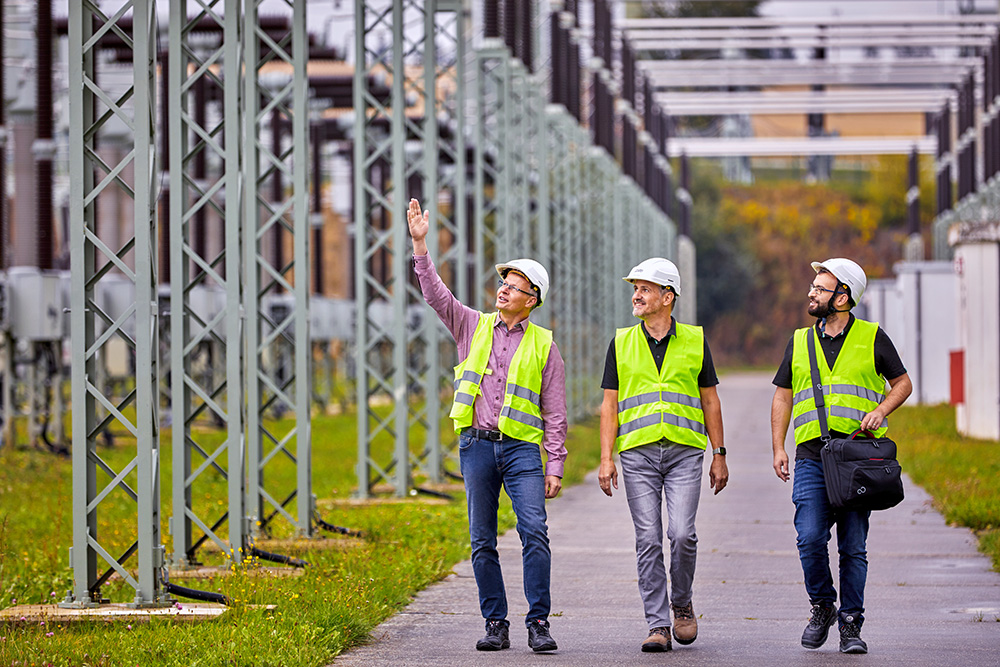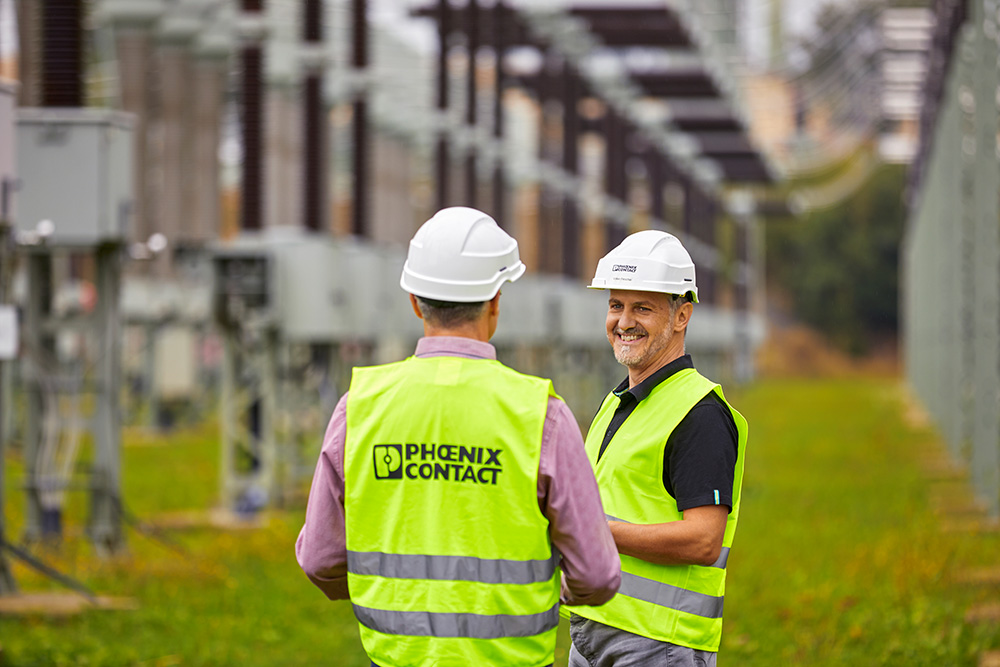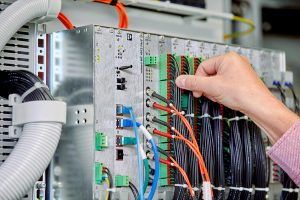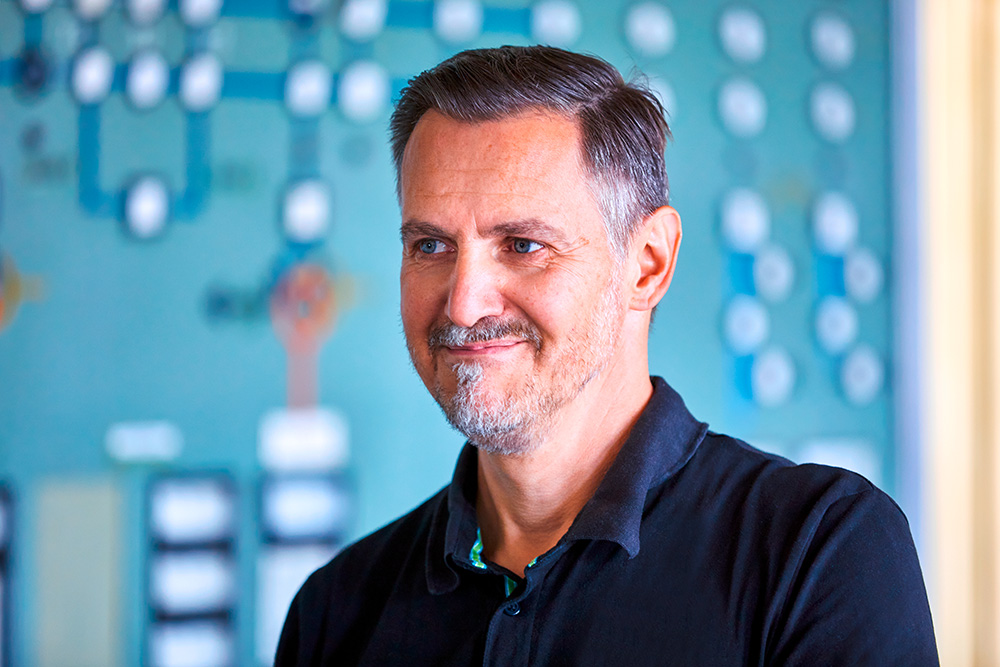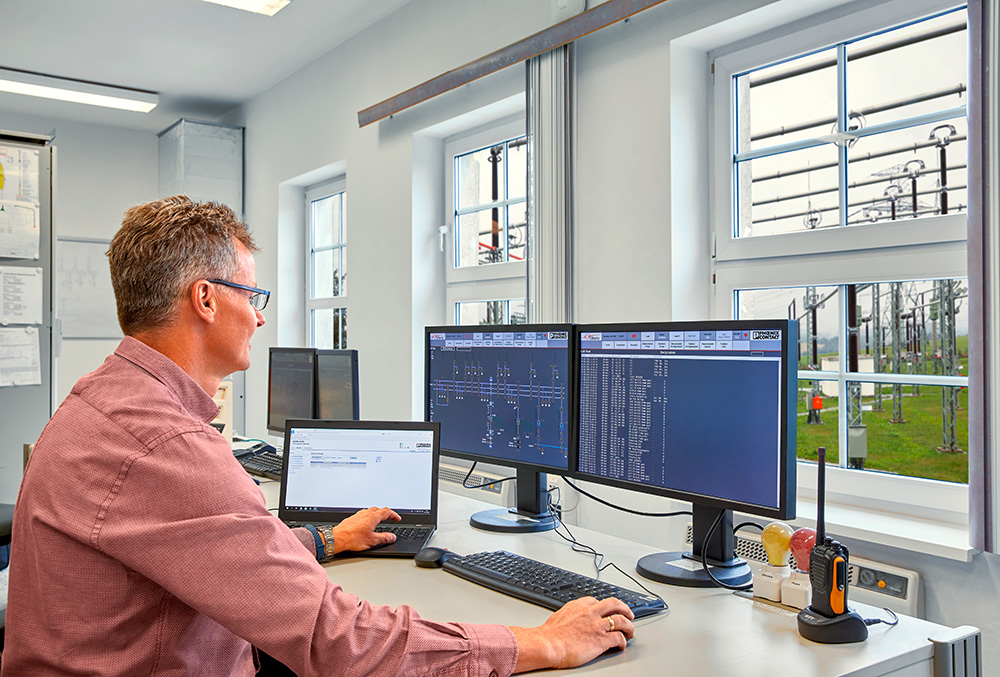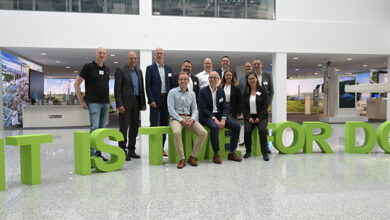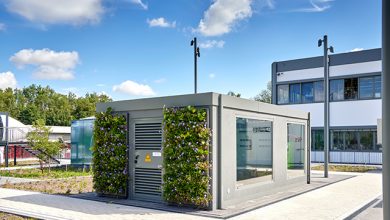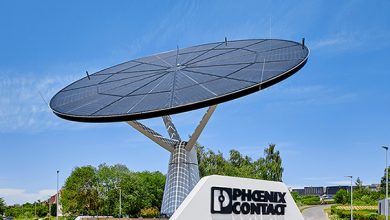When walking through the plant, there is a constant crackling noise above. And the warnings are still ringing in our ears: Always take small steps. Do not raise your arms too high and please do not wave an umbrella around. Theoretically, the busbar is far enough away. Theoretically…
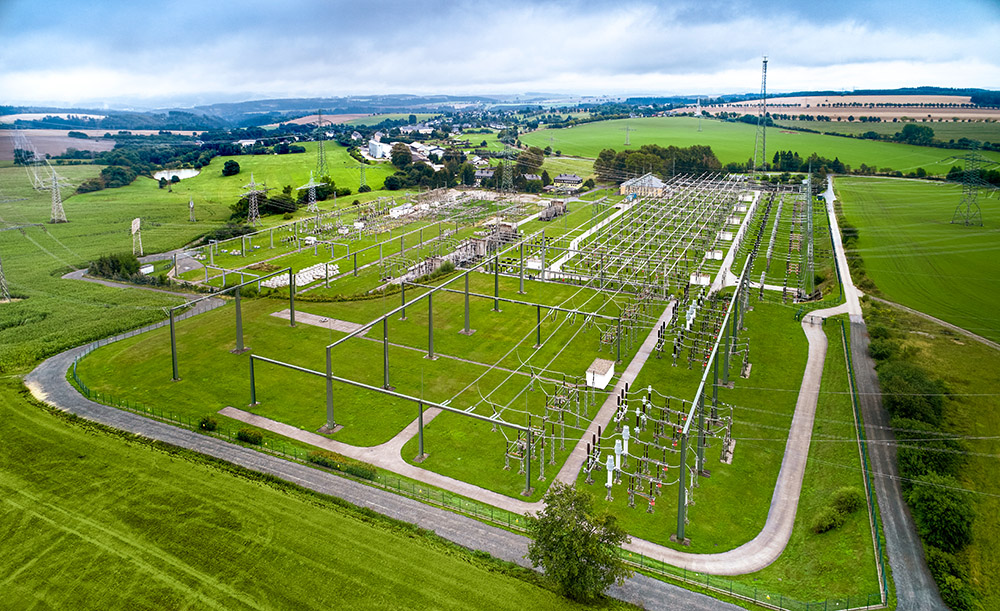
Crime scene Remptendorf in one of the most beautiful corners of Thuringia, far in the south of the federal state. A visit to a transformer station, which in its dimensions and arrangement has more of a stadium character. “This is where power lines of all three voltage levels meet, i.e. 110 kilovolt (kV), 220 and 380 kV. And not only in terms of energy, but also topographically,” Mahsum Kar describes the plant and points to the various terraces where the transformer station is located.
The 31-year-old electrical engineering graduate gives us another tip. “You can also see the differences on the masts. One insulator is used for 110 kV, two for the 220 kV grid, and three on the 380 kV line.” Kar is a native Thuringian who has previously worked as a project manager for remote control technology in the field of renewable energies and medium-voltage grids.
Reichssammelschiene of the 30’s
So he is not only right here in Remptendorf, but also in the team of Energy Automation from Phoenix Contact. Because the experts from Gera are active on site here to install a new generation of station control technology. Thomas Ehrhardt, team and project manager, explains: “Remptendorf is a historical plant, which was already one of the hubs of the all-German power supply system at the time of the Reichssammelschiene at the end of the 1930s.
Over the decades, the plant has been repeatedly adapted to the requirements, because even if the electricity has not changed, new demands on the technology for transport and security of supply have continually been introduced and expanded.” For example, it was not until 1991 that a 380 kV line was connected in Remptendorf, thereby putting another “electricity highway” into operation.
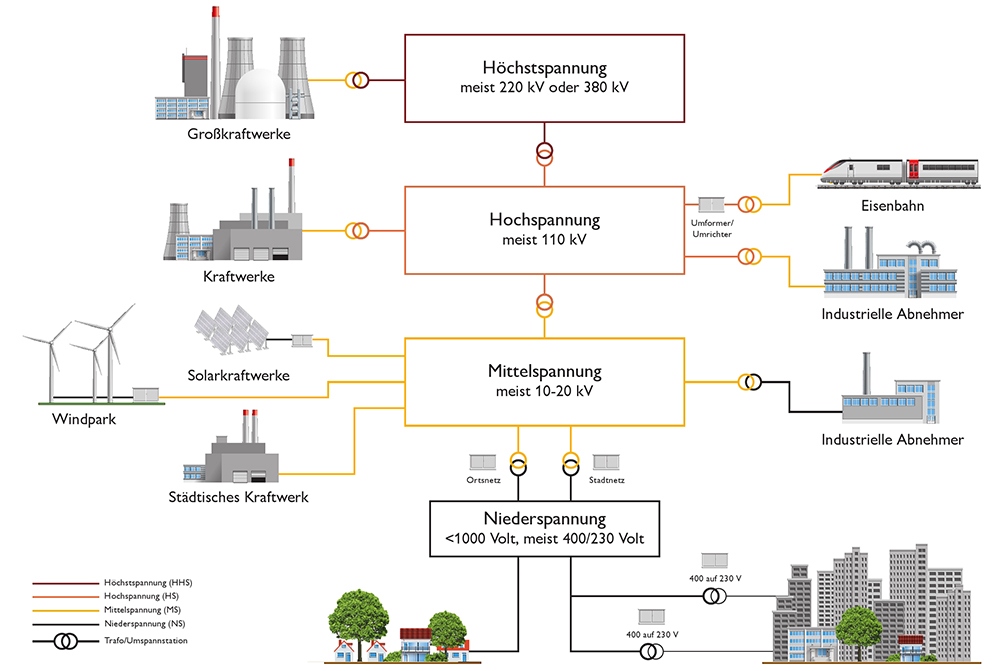
In an increasingly electrified world, the transport of the energy supplier electricity is becoming more and more important. A distinction is made between four voltage levels. The low voltage is available in the household. The medium voltage of 1 to 50 kV supplies local networks. The expert speaks of high voltage at a voltage of 110 kV, which also powers railroads. In Remptendorf, for example, the power plant of the Bleilochtalsperre feeds into the grid at this voltage. At 220 and 380 kV we speak of extra high voltage.
Control from a distance
In transformer stations such as Remptendorf, the different voltage levels come together and are changed (transformed) by transformers to the appropriate range for the respective consumers.
Thomas Ehrhardt explains. “Electricity network operators distinguish between station control and remote control technology. The first term refers to the safe control of the primary technical components; in other words, mainly disconnectors, circuit breakers, and transformers. The remote control technology monitors the plant for faults and makes remote control, i.e. operation from a distance, possible.”
50Hertz Transmission GmbH, one of the four major electricity network operators in Germany, has its headquarters in Berlin. The Remptendorf substation is usually also controlled from here. On site, the premises are only used for maintenance and conversion work. As is currently the case.
Time jump in the control room
Walking through the mostly deserted company buildings, we are reminded of the charm of past decades. Fascinated, we stand in a control room that looks as if we have taken a step back in time into the previous century. Volker Fleischer, the third member of the Phoenix Contact team, smiles at the enthusiasm for old material. “I have been with the company for 27 years and still remember this room when it was in active operation.” Fleischer is an expert for the visualization of station control technology.
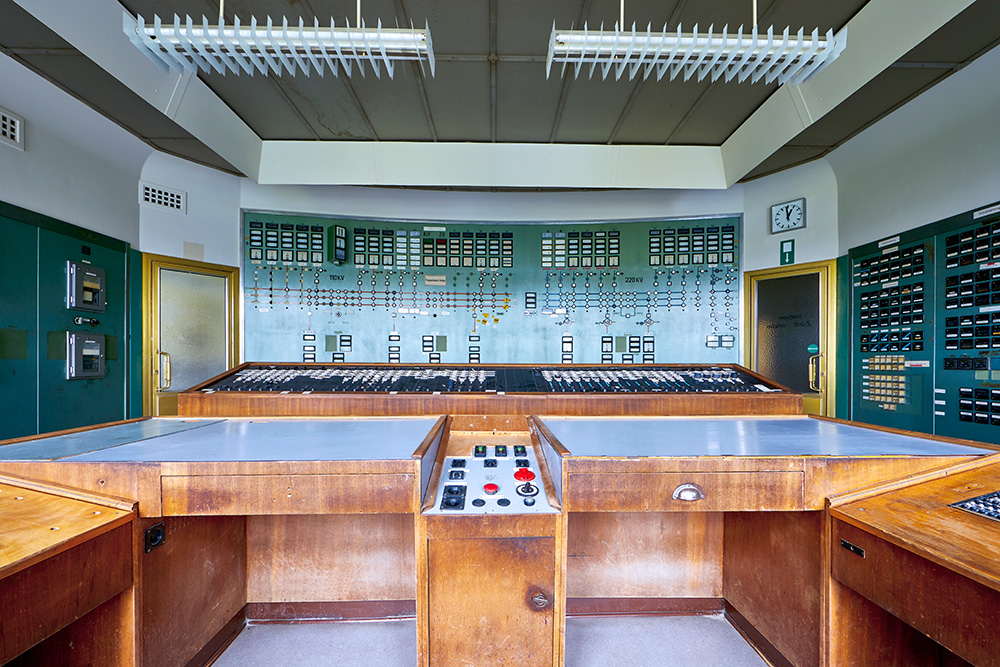
The actual task of the three engineers is to replace the more than ten-year-old control technology with modern components from Phoenix Contact. Never change a running system – does that not apply here? “Quite simply, the requirements have increased significantly,” explains Fleischer. “Fiberglass and Ethernet connections were already the standard 15 years ago. But now, the whole issue of security has been added. And of course we have also improved and developed our modules further, with increasing processing power. Therefore, renewing the technical components here in Remptendorf is of the utmost importance.”
Ehrhardt adds, “In general, the restructuring of the power grids is placing an ever-greater burden on the grid operators. And also at the extra-high voltage level. The old one-way street principle is no longer sufficient in times of fluctuating energy feed-in from renewable energies. Large offshore systems or future energy storage power stations make it necessary for operators to keep their grids under control at all times and in real time using the latest remote control technology. And of course, the systems have to run stably 24/7 and have a service life of at least ten years.”
Jumping through the high grass
There is no lack of work for the Energy Automation team of experts, because the 50Hertz power grid covers the entire eastern part of Germany, including the connection of offshore wind farms. In addition, the team also accepts orders from Tennet, another grid operator. And the rest of the Republic? “It is looked after by colleagues from Velbert, where the Energy Competence Center of the Phoenix Contact Group is located.” While twelve specialists in Gera take care of the crackling high voltage, the team in Velbert, North Rhine-Westphalia, with around 90 experts ensures that it doesn’t get dark in Germany.
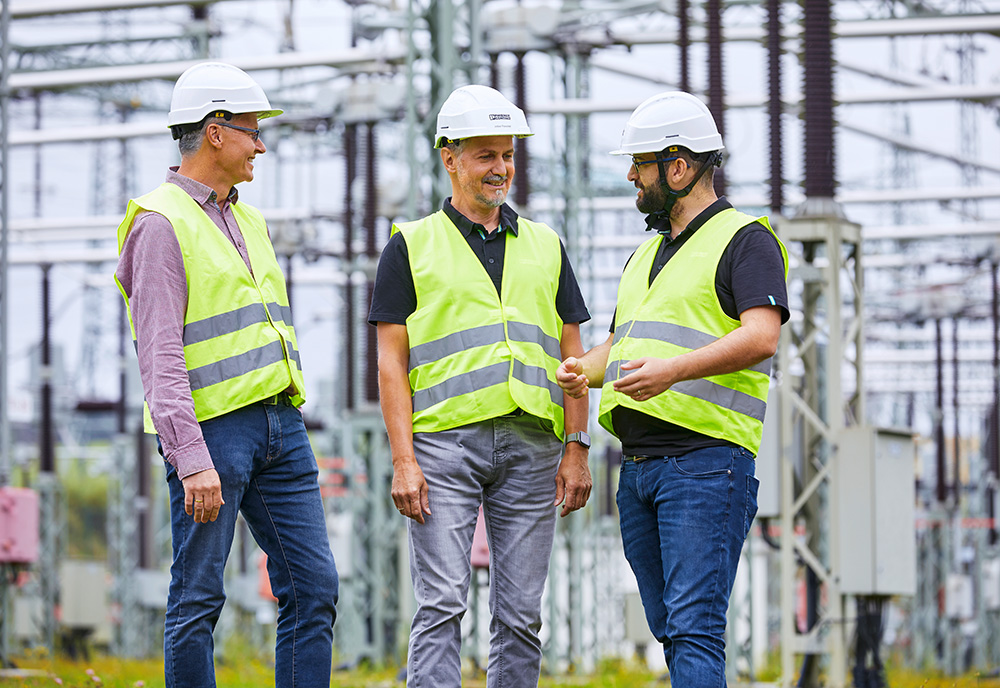
The only thing that remains constant is the current itself. With a broad grin, the 50Hertz employee accompanying us tells us about summer tours for student groups. “When they walk between the systems in thin sandals across the damp grass, they really start jumping around.” Our Phoenix Contact colleagues from Gera do not jump around when walking through the impressive system. Sturdy footwear and a profound knowledge base make dealing with extra-high voltage a technological challenge, but not a life-threatening undertaking.
